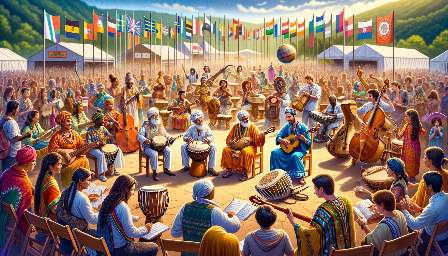South Asian music has evolved through a rich tapestry of external cultural influences, shaping its unique characteristics and contributing to the global world music scene.
Historical Foundation
The history of South Asian music reflects a confluence of diverse cultural forces, including the influences of ancient civilizations, trade routes, colonialism, and globalization. These external forces have played a pivotal role in shaping the musical traditions of the region, leading to the emergence of distinctive genres and styles.
Indigenous Roots
South Asian music has deep indigenous roots that are intertwined with the religious, social, and cultural practices of the region. However, external cultural forces have significantly impacted the evolution of this music, introducing new instruments, scales, and compositional techniques.
Indian Classical Music
Indian classical music, with its intricate raga system and diverse rhythmic patterns, has been influenced by interactions with Persian, Arab, and Central Asian musical traditions. The Mughal Empire, for example, played a crucial role in the fusion of these diverse influences, leading to the development of new musical forms such as the Khayal and Thumri.
Impact of Colonialism
The era of colonialism brought European musical elements to South Asia, leading to the incorporation of harmonies, orchestration, and Western musical structures into traditional South Asian music. This fusion gave rise to new genres like Indo-jazz and Bollywood music, epitomizing the enduring impact of external cultural forces on the region's musical landscape.
Globalization and Fusion
In the modern context, South Asian music has experienced a surge in global popularity, fueled by collaborations with international artists and the fusion of traditional elements with contemporary genres such as electronic music, hip-hop, and R&B. This integration has created a vibrant tapestry of sounds that resonate across borders, contributing to the diversity of world music.
Conclusion
The evolution of South Asian music stands as a testament to the enduring influence of external cultural forces. Its ability to adapt and assimilate diverse musical traditions while retaining its indigenous essence has resulted in a dynamic musical landscape that continues to captivate and inspire audiences worldwide.










































